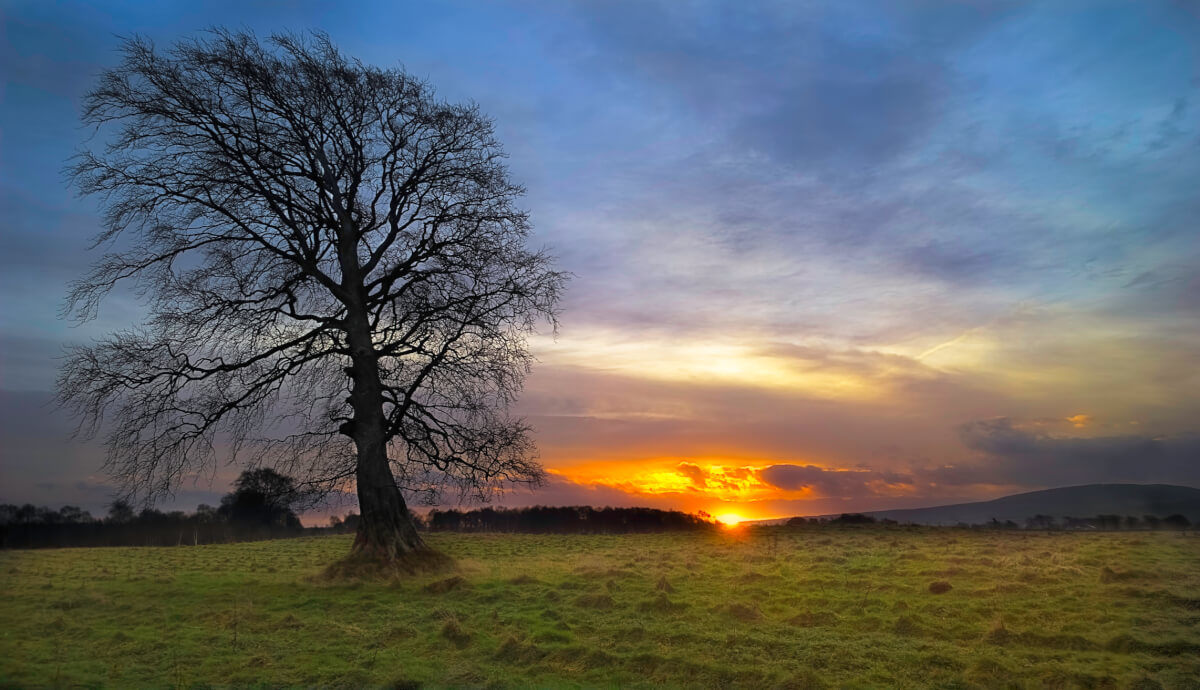No Compass? No Problem: Orienteering Without a Compass
Today, orienteering and navigation are easier than ever. Tracking systems and navigation apps are built into mobile phones, smart watches and all kinds of mobile devices. And for the savvy camper, there’s always the trusty map and compass to fall back on.
But even with all these tools at your disposal, you should still be prepared for the worst. In terms of navigation, knowing how to orient yourself without any modern electronic tools is a lifesaving skill worth learning.
USING THE SUN AND MOON
The easiest way to find the cardinal directions is with the sun. Since it rises in the east and sets in the west, it’s easy to determine north through the sun’s position.
But what if it’s midday and the sun is overhead? During this time, it will be harder to determine its position. You can wait it out and see where the sun will eventually settle, but there’s still a way for you to orient yourself without using up the whole afternoon.
Place a stick upright on a clear patch of land. If it doesn’t cast a shadow because the sun is directly overhead, wait a couple of minutes until it does. Mark the tip of the shadow cast by the stick with a small object or a mark on the ground. After 15 minutes, mark the tip of the shadow’s new position.
Now draw a straight line to connect the two points together. The first point will always be west, and the second point east. Now draw a perpendicular line through the first line. With west to your left, the top will be north, and the bottom south.
The same method can also be applied at night when the moon is out and bright.

USING A TIMEPIECE
If the sky is overcast or you don’t have a clear space to position a couple of sticks, what do you do? If you have a traditional analog watch with hands, you can also use it to determine the cardinal directions.
Hold it in your hand parallel to the ground. Point the hour hand toward the sun. The midway point between the hour hand and the 12th hour marker will point south. For example, if it’s 3:00 pm (15:00), the hour hand that’s pointed towards the sun is on the number 3 on your watch. The midpoint between the numbers 12 and 3 on your watch, or 03:07, points toward south.
This works if you’re in the northern hemisphere, but if you’re south of the equator, you’ll have to modify it a bit. Instead of the hour hand, you must point the “12” or top of your watch towards the sun for your first point, and the hand pointing to the present hour will be your second point. The midpoint between the number 12 and where the hour hand points will face north.
Note that this will only be accurate if you are at a considerable distance from the equator (40–60 degrees north or south of it), and the watch you’re using is displaying the correct time. If you’re on Daylight Savings Time (DST), you’ll have to move your hour mark to 1 instead of 12.

The Signs Around You
Although less accurate, you can use some of the signs around you to verify the results of your other methods.

Moss will often grow on trees and rocks facing north. You can also observe which side of trees is heavier with branches and leaves; the side with less branches and leaves will often be facing north. If it’s a fruit-bearing tree, the fruit may tell you something about the direction, because fruit on the south-facing portion of a tree will usually ripen faster. This is because the sun stays longer in the southern part of the sky, promoting growth for plants facing it (while the shaded northern side promotes the growth of moss). If you’re in the southern hemisphere, this is reversed, and moss will often grow on the south-facing portion of trees and rocks, and branches and leaves will be denser on the northern side of a tree.
But as mentioned, this is not a very reliable method, and should be used only as a last resort. Many factors can affect the growth of plants, and in a shady location, moss can grow around trees and rocks.


